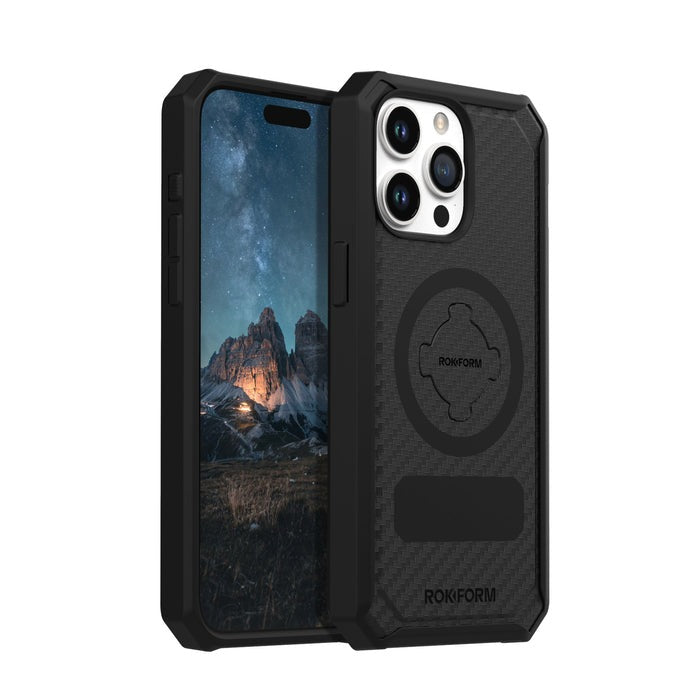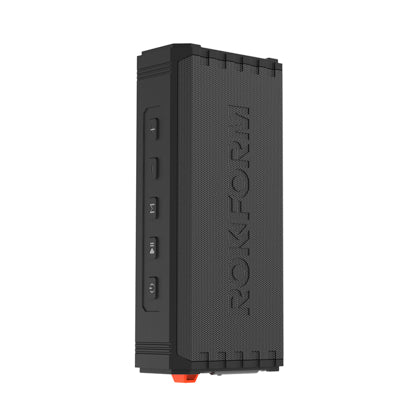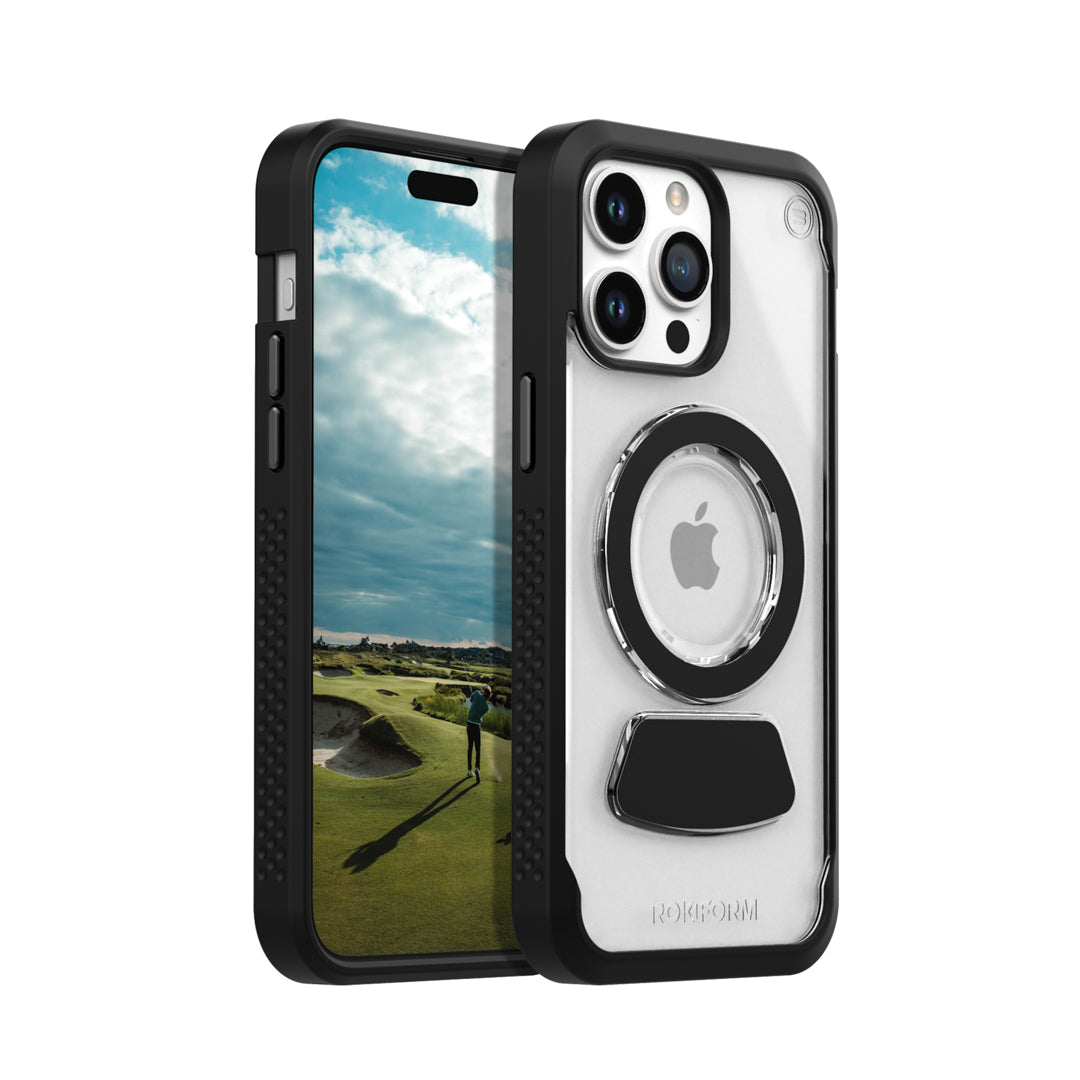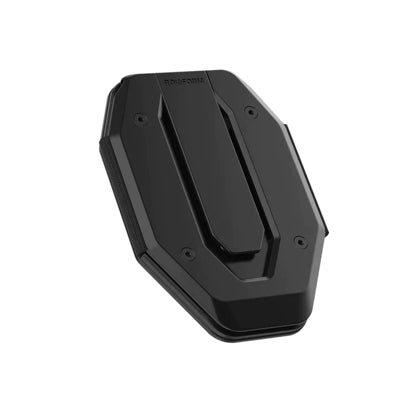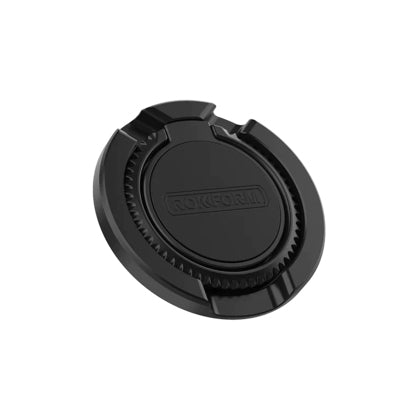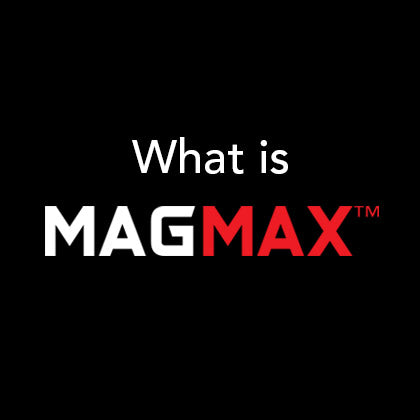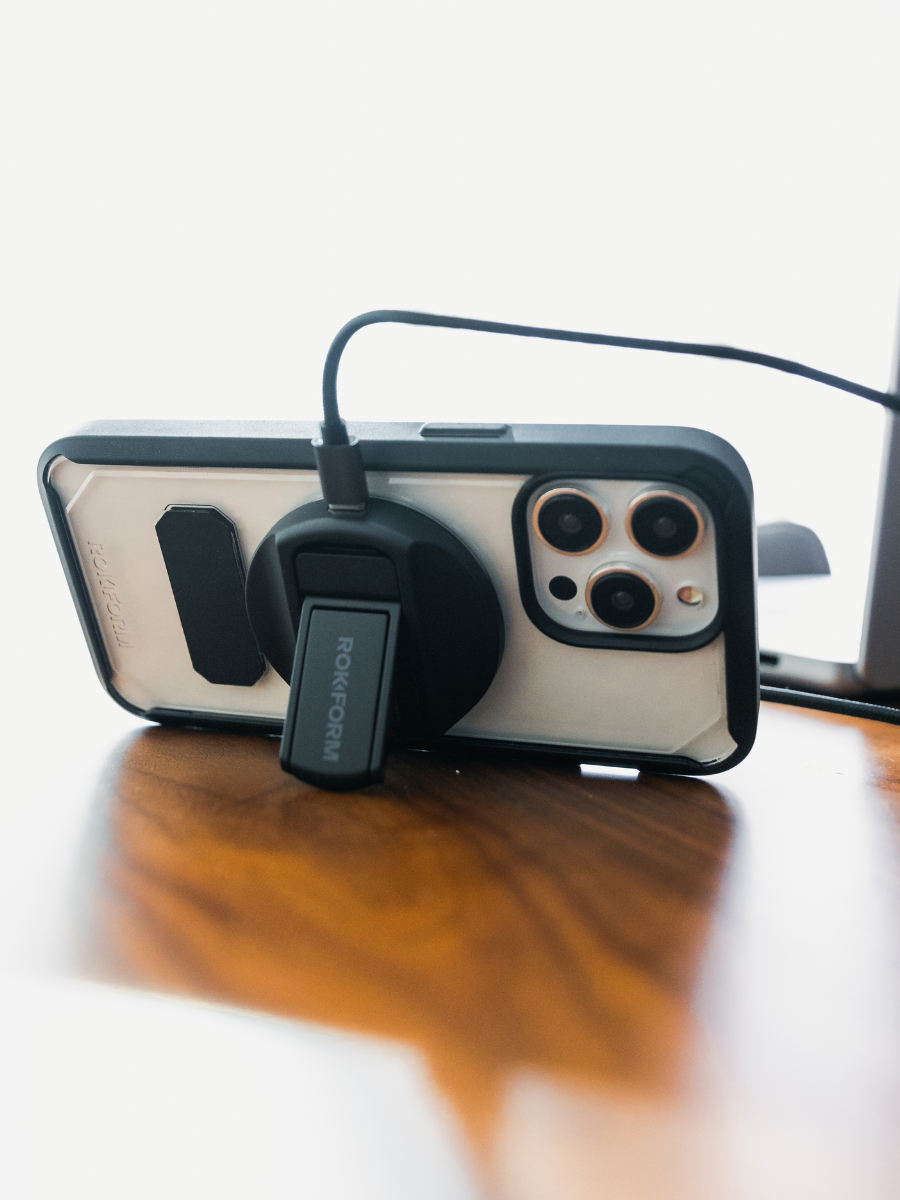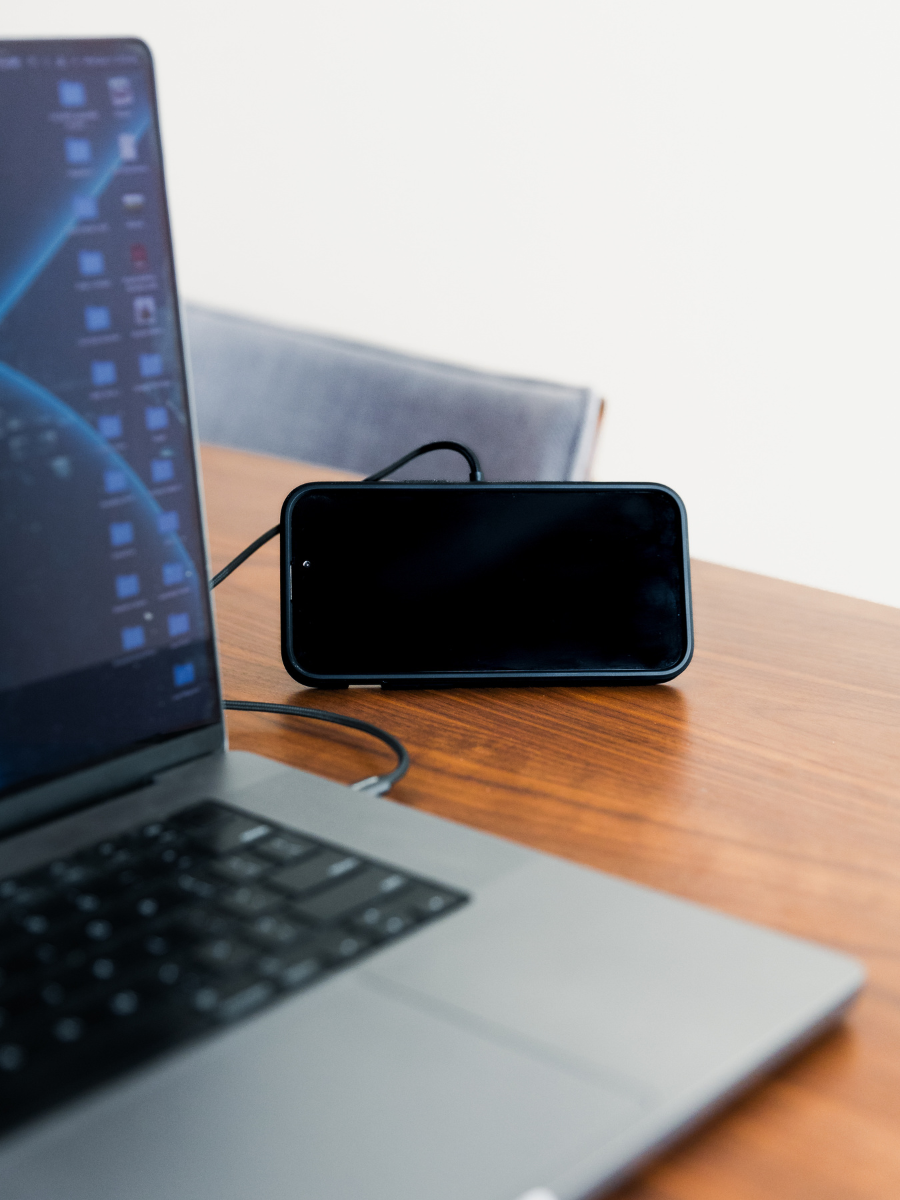Does wireless charging work? Is wireless charging safe? Analyzing the pros and cons of wireless charging & answering common questions on one of the most commonly used charging devices globally.
Wireless charging has changed the game, but it hasn’t completely wiped out traditional chargers just yet. While wireless smartphone chargers are certainly the way forward, standard charging cables are still a common way to reach a full charge. Get caught up with the latest tech and find out if wireless charging is right for you!
ROKFORM specializes in functional phone accessories designed for an active lifestyle. Take care of your device with a protective phone case and compatible mounts purpose-built for cycling, motorcycling, or driving. Every iPhone 15, 14, and 13, ROKFORM case allows for seamless wireless charging, making getting on with your day a breeze.
So what’s the deal with wireless charging? How does it really work, and should you be using it to charge up your smartphone? We’re taking a look at the pros and cons of wireless charging to help inform your decision.
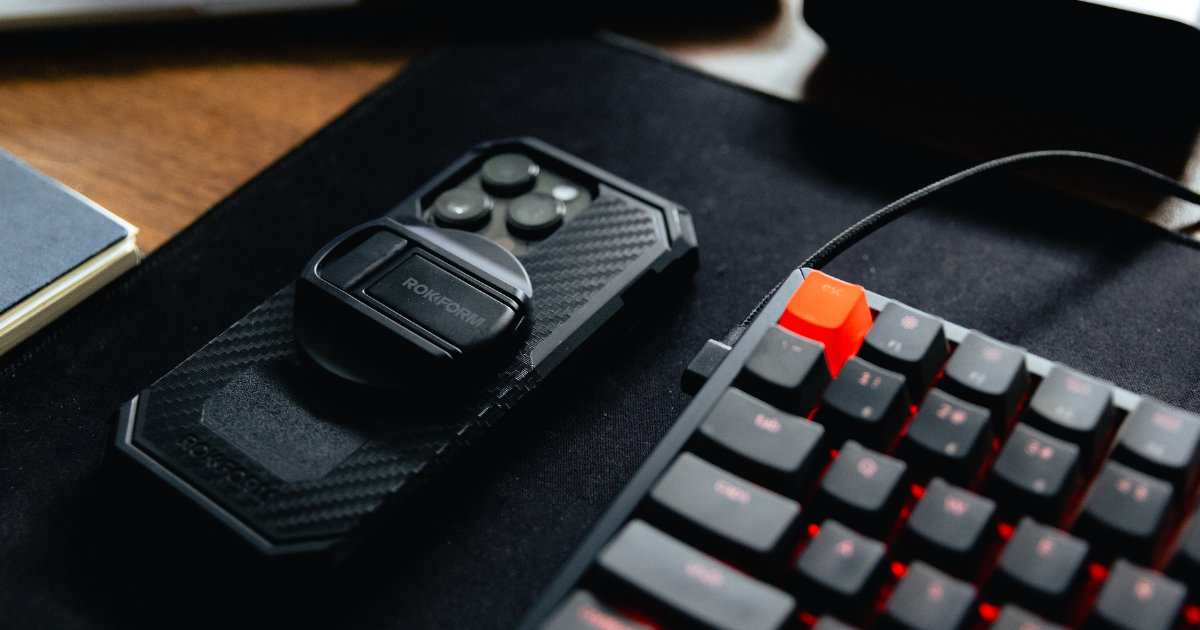
What is Wireless Charging?
Wireless charging is often referred to as Qi wireless charging or Qi technology. The Qi standard was introduced in 2008 and has become the principal wireless charging standard in the industry, used across most smartphone brands. Qi uses both resonant and inductive charging, of which the latter requires devices to be close to each other in order to work.
QI Wireless charging technology is hands down the most popular, but there are still other technologies to note. For example, other wireless charging standards include the Alliance for Wireless power (A4WP) and the Power Matters Alliance (PMA).
In any case, Qi standard has long been the favorite for a couple of reasons:
• Easy integration into furniture and accessories - Qi technology is very easy to incorporate into different aspects of our lives. It's present in cars, smart furniture, and much more.
• Globally supported and accepted technology - Since it's one of the most accepted wireless charging standards, it's integrated everywhere.
• Backward compatibility - Qi2 technology is backward compatible with older Qi versions on Android or iOS devices and more.
• Safety mechanism to prevent device damage - In terms of wireless charger safety, Qi sets the norm. The newest safety regulations and cutting-edge technologies are found in every verified Qi wireless charger.
• Fast charging support - The Qi standard supports fast charging capabilities, allowing you to spend less time waiting for your device to charge.
• Ease of use - The whole point of wireless charging is to simply put your device down and stop scrambling for cables!
How Does Wireless Charging Work?
Wireless charging uses a charging pad to transmit power wirelessly via electromagnetic induction. This works because the wireless inductive charging station creates an electromagnetic field between the charger and phone to transmit the electric current through the airwaves.
The waves are picked up by a receiver coil embedded in the back of your phone that transforms the electromagnetic waves into usable electricity. This electrical current is then used to charge the smartphone and store it in the phone’s battery.
Because the magnetic field has limited range, phones must be placed close to the wireless charging stand. This typically means resting the device directly on the pad. There is normally a circle or other marker that indicates the center of the charging station, but the positioning doesn’t need to be exact to the millimeter.
When you center your smartphone onto a wireless charging pad or magnetic power bank, your phone will display that it's charging. You’ll notice the change of your battery icon from its standard mode to a battery with a bolt in the middle, indicating that your phone is actively being charged. Some different phones display a cool graphic while the device is charging.
What is a Wireless Charger?
A wireless charger is a device that transfers electricity wirelessly so that electronic items can be charged without the necessity of physical wires.
It consists of a base station or pad that connects to a power source and generates an electromagnetic field. We place the supported device on this pad, and it starts charging.
There are three main types of chargers:
- Inductive chargers are most common for smartphones and similar smaller devices like smartwatches.
- Resonant wireless chargers are most commonly found in vehicles that have a charging pad and some smartphones.
- Radio frequency chargers are mainly used for industrial and medical devices.
Across all wireless charging technologies, the most commonly used is still Qi technology, which uses wireless inductive charging.
Do Wireless Chargers Work on All Phones?
As long as the wireless charging standards are the same, for example, both use the Qi standard, then the device will work with any wireless charger. If you're not sure if the device uses Qi wireless charging technology, look for the Qi logo.
The logo appears on almost all devices compatible with Qi chargers. If you have an iPhone you can easily see which iPhones have wireless charging with a quick Google search. If you don't see the logo, it's likely that your device doesn't support wireless charging since not all phones support it. The last thing you can do to check is consult your manufacturer; they should give you a concrete answer.

Types of Wireless Charging Technologies
The three biggest types of wireless charging technologies are: inductive charging, magnetic resonance, resonant inductive charging, radio frequency (RF) charging, and infrared (IR) charging. We'll only stick to those that are most common for smartphones
1. Inductive Charging: Inductive wireless charging is the most commonly used technology in wireless charging. In fact, it's everywhere. Smartphones, along with other tiny electronic gadgets and wearables, often use this technology, which was created by the Wireless Power Consortium (WCP). Numerous respectable manufacturers, like Apple and Samsung, have embraced the technology due to its remarkable success.
How does Qi charging work?
Qi wireless charging technology works by having energy delivered via electromagnetic induction from a charger to a receiver. The coils on the Qi charging pad generate an electromagnetic field that transfers energy when the device is put on it. You may charge your device's battery by inducing an electric current in the receiver coil and then converting it back into electrical power.
2. Resonant Inductive Charging: Although not as common as the more conventional inductive charging technique, resonance charging is quickly becoming a popular technology. In comparison to the commonly used Qi standard, resonance charging provides more versatility in terms of charging several devices at once via the use of magnetic resonance for power transmission. This ensures the technology works properly while also providing some distance between the smartphone and the charging station.
How does Resonant Charging work?
In order to create a field, resonant-based chargers inject an oscillating current into a highly resonant coil. The power is then sent to a second coil with the resonance frequency by means of this electromagnetic field. After that, the second coil changes the voltage into a current that electronics may utilize for charging and powering.
What is MagSafe® Charging?
While the technology may appear straightforward there are considerations to keep in mind if you wish to fully harness its capabilities. In this article we delve into the world of MagSafe® wireless charging and accessories enabling your phone to charge wirelessly so you can enjoy its usage in a range of locations.

Is Wireless Charging Right for You?
Six years ago Apple introduced the feature of wireless charging for iPhones. The announcement didn't create a frenzy because of fervent Apple fans; other technology companies had already incorporated charging into their phones. However, Apple's iconic brand status brought charging into the spotlight, and pushed both Apple and other innovative phone manufacturers to the forefront of cutting-edge technology.
Fast forward to 2024, the initial excitement may have subsided. Now more than ever an abundance of cellphones offer charging capabilities. Nowadays it's nearly impossible to find an Android or iPhone without this feature. Making use of the ROKFORM magnetic phone cases designed for Samsung and Apple devices - wireless charging has become effortless. These cases provide drop protection up to 6 feet and feature powerful magnets that securely attach them to any magnetic surface.
Deciding if wireless charging is right for you depends on several factors, such as convenience, device compatibility, and charging speed. The wireless charging system has its own quirks, so let's look closely at both sides:
Advantages of Wireless Charging
The benefits of wireless charging systems have contributed to their becoming increasingly common. No cable and wire is a very appreciated benefit. When you need to charge your phone, you won't have to worry about finding the cord or untangling cables anymore. It greatly simplifies the process of charging.
- You're free to walk about and charge your gadget however you choose since there are less cables to tangle with.
- Since it's wireless, there is no need to worry about tangling the wires, extending their lifespan. Since the charging pad cable isn't moving around very much, it isn't a major concern.
- Your connections are safer. With fewer wires going directly into your phone, there's a far lower chance of electrical mishaps.
For the fastest wireless phone charging experience while on the go, try the RokLock Wireless Charger. You can see more details about our charger in this YouTube video:
Disadvantages of Wireless Charging
You need to know that wireless charging might have certain drawbacks. One major worry is that the charging pace could not be as fast as with the old-fashioned cable method.
- Charging wirelessly is more time-consuming. Wireless charging is one area that is always being upgraded. Still, it can't compete with the speed of cable charging.
- Not completely wire-free - you still need to connect it via cable to a wall outlet. The idea is that your phone doesn't need a cable connected to the charger itself.
- Some adapters block your screen from being visible while the device is charging. To make matters worse, not all chargers work with all devices. In the same way that every piece of modern technology is only compatible with other pieces of modern technology.
- Qi stands can only work with other Qi devices.
- You run the risk of your mobile device overheating. Rokform Phone Chargers are safer than flimsy alternatives that might cause your device to overheat.
- Wireless charging pads are more expensive than cable chargers. The ease of wireless charging comes at an extra cost.
Additionally, wireless charging efficiency may decrease with thicker phone cases or certain materials. If you're using a thicker protective phone case, you'll want a compatible wireless charger that delivers enough power to fully charge your phone. The ROKFORM Magnetic Wireless Charging Stand easily attaches to any MagSafe-compatible phone case and provides a perfect viewing angle while charging.
That being said, these issues are relatively minor and most people find wireless charging to be a convenient and reliable way to keep their devices powered up.
Summary of the Pros and Cons of Wireless Charging
To put it all together, let’s look at the main pros and cons of wireless charging. While wireless chargers can be more expensive at first, their ease of use pays huge dividends each time you charge. Check out the summary below:
Stop fumbling around with messy cables and old-school charging docks. Upgrade to the next level and enjoy all the benefits of wireless charging with the ROKFORM Magnetic Wireless Charging Stand.
- Powerful magnetic hold to phone
- Lightweight, compact, and portable
- Works with any MagSafe® compatible phone or case
- Adjustable stand provides perfect viewing angle, portrait, or landscape
How Wireless Charging Works With A ROKFORM Case
If you have a compatible ROKFORM case, wirelessly charging your phone is a walk in the park. Some ROKFORM cases come with removable center plugs: one magnetic and the other non-magnetic. Users simply need to remove the magnetic plug when they want to charge wirelessly. New ROKFORM phone cases for the iPhone 15, iPhone 14, iPhone 13, Samsung S23, and Samsung S24 have these optional plugs as well as the MAGMAX™ magnet array for wireless charging.
If you're using a ROKFORM iPhone 15 case, wireless charging is only compatible with ROKFORM's charging products.
Wireless charging system compatibility with ROKFORM iPhone 15 cases: The Rugged, Crystal, and Eagle 3 iPhone 15 cases have a built-in MAGMAX™ magnet array and will work with all Rokform phone chargers. Compatibility may vary with MagSafe wireless charging products that are not affiliated with Rokform.
It’s super easy to pop out that center magnet or you can simply leave it in the non-magnetic plug. The advantage of the extra center magnet is an even stronger connection to magnetic mounts or surfaces. The ROKFORM Eagle 3 case is designed specifically for golf and doesn’t have a center magnet to worry about. This lightweight, course-ready case boasts the MAGMAX™ magnet array that always allows for wireless charging.
“This phone case rocks! It won’t come loose from where you put it and it’s well made, fits like a glove.”
What's a Good Setup for a Wireless Charging System?
When using a wireless charger with one of the above ROKFORM phone cases, a 20W USB-C power adapter is the minimum requirement. We recommend at least 30W to deliver more power to the wireless charger because our cases are thicker than average. We’ve had the best results with Anker’s 65W power adapter, and our own pocket-sized powerhouse: ROKFORM's 65W 3-Port Power Adapter.
If you need the perfect setup but you're limited to one outlet, here's what we recommend.
- To plug into the outlet is our PowerTrip 3-Port Power Adapter.
- Next, connect our PowerTrip 100W USB-C charging cable to one of the two USB-C ports.
- If you're rockin' a Rokform case, you can use a RokLock™ Wireless Charger or a Magnetic Wireless Charging Stand.
- Enjoy your wireless charging system!
How to Wireless Charge in Your Car
For wireless charging in your car, mount your phone to the RokLock™ Wireless Charger! The charger mounts directly to either the RokLock™ Car Dash Mount or Windshield Mount and stays securely in place inside your vehicle. Then simply attach your phone to its ROKFORM case that twists onto the charger. If your case has a plug, you’ll have to remove the RokLock plug before you can mount onto the accessory.
If you're not planning to utilize wireless charging technology in your vehicle but still want to stay connected to your phone's GPS and music apps, ROKFORM offers a full line of car phone holders and truck phone mounts.
Are Wireless Chargers Safe to Use in a Vehicle?
Using a wireless charger and being around one is 100% safe.
The vast majority of wireless chargers use harmless, very low-level electromagnetic fields. You will never have to worry about overheating again thanks to their heat-management capabilities. We guarantee that our Rokform wireless chargers will meet or surpass all international safety standards. Not only do they serve as a phone stand, but they are also perfect for charging your phone on the go.
Check Out the Best Wireless Charging System for Your Needs
ROKFORM is a premium handheld innovation made for those who take action seriously. Our products are designed in California, inspired by necessity and first-hand experience, built to last, backed by real people, and engineered by an experienced team with deep insights into wireless charging technologies.
Whether you're looking for a premium phone case, versatile mounting system, or functional accessories, ROKFORM has you covered! Visit our showroom in Irvine, California, or contact our 5-star support team with any questions, comments, or concerns.

